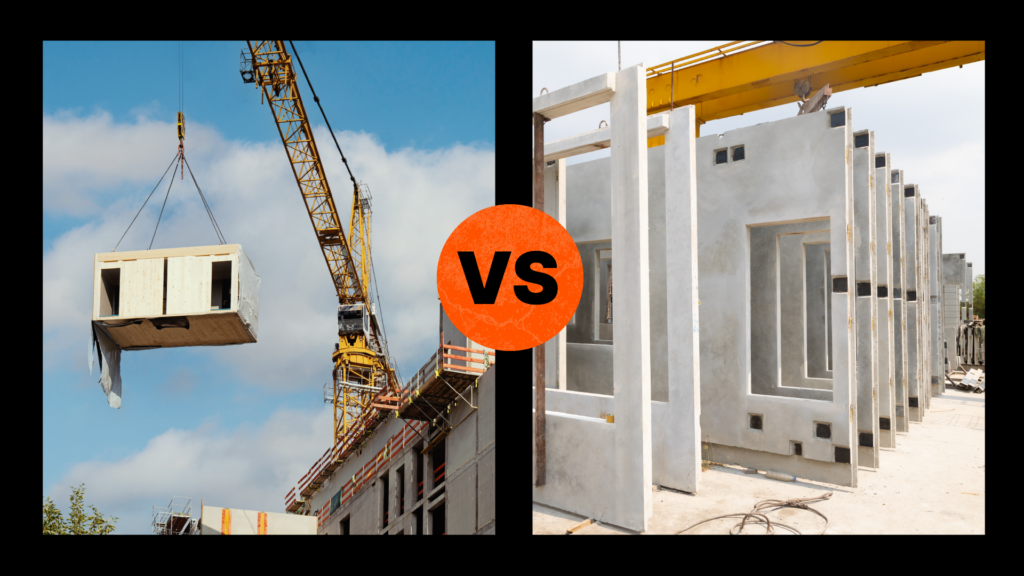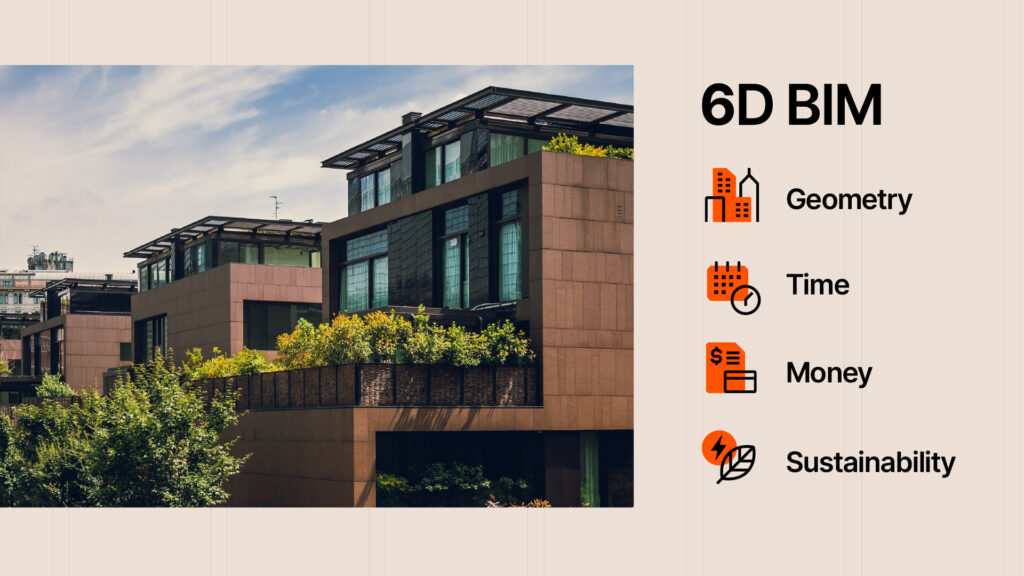— 12 min read
Construction Litigation: How Disputes Escalate & How to Manage Them
Last Updated Nov 14, 2024
Last Updated Nov 14, 2024

Construction projects are inherently dynamic, often involving competing interests of timelines, budgets and expectations. Despite best efforts, disputes can arise over issues such as contract breaches, project delays and defective work. When these conflicts can’t be resolved through negotiation or alternative means, litigation becomes the next step, bringing its own set of challenges for all stakeholders involved.
This article examines common triggers for construction litigation, the legal processes involved and effective strategies to manage and mitigate risks before disputes reach the courtroom.
Table of contents
What is construction litigation?
Construction litigation refers to legal disputes that arise from construction projects, often involving multiple parties, such as general contractors, subcontractors, owners and design professionals. These disputes can stem from a variety of issues — whether it’s a delay in project completion, cost overruns or work that fails to meet agreed-upon specifications.
Not every conflict on a jobsite leads to litigation. In fact, most don’t. In most cases, these disputes are resolved outside the courtroom through mediation or arbitration, where the parties work toward a mutually acceptable solution.
However, when these alternative methods fail, litigation becomes the next step. Litigation is a more formal legal process in which the parties take their disputes to court. Although this can be time-consuming and costly, it serves as a last resort when other resolution efforts have not been successful.
Common Causes of Construction Litigation
Even with thorough planning, construction projects can be prone to conflicts. These conflicts often lead to disputes, and when unresolved, they can escalate into litigation. Here are some of the most common causes of construction litigation.
Contract Breaches
One of the primary drivers of litigation is the breach of contract. Construction contracts outline the scope of work, timelines, payment schedules and the specific responsibilities of each party. When one party fails to meet their obligations — whether by delivering substandard work, missing deadlines or not adhering to the agreed-upon terms — disputes can arise.
These breaches often stem from ambiguous language in the contract or changes that occur during the project, such as scope adjustments or unexpected site conditions. Disagreements over who should bear the costs or responsibility for these changes frequently lead to litigation, as the affected parties seek compensation or enforcement of the contract terms. Crafting clear and detailed contracts can help reduce the risk of disputes and ensure that all parties understand their obligations from the outset.
Change Orders
Change orders are a common source of conflict, particularly regarding who should bear the costs and consequences of project changes.
General contractors often encounter delays or increased costs due to changes in the project scope, design or unforeseen site conditions. When these changes occur, GCs expect to be compensated for the extra work. However, disputes frequently arise when the parties disagree over who is responsible for these additional costs or delays. This can lead to litigation, as the involved parties seek to resolve who should shoulder the financial burden.
Delays and Schedule Disputes
Project delays often disrupt tightly controlled timelines and have a cascading effect on subsequent tasks. When one phase of a project is delayed — whether due to weather, labor shortages, design changes or material delivery issues — it can impact the entire schedule.
These delays frequently result in disputes as parties argue over who is responsible for the setbacks and who should bear the financial burden. General contractors may claim that delays were caused by factors beyond their control, such as late design approvals, permitting delays or unexpected site conditions, while owners may argue that poor project management or inadequate resources contributed to the delay.
Determining fault in these cases is complex, and disputes often escalate into litigation as the involved parties seek compensation for lost time, additional labor or penalties for failing to meet contractual deadlines.
Upstream vs. Downstream Issues
Delays often create a domino effect throughout the project. For example, if work is delayed upstream — such as a delay in materials delivery or a design change — it affects downstream activities like installation or finishing work.
Determining who is responsible for these delays can be complex. GCs may argue that delays were outside their control, caused by upstream decisions or delays made by owners or architects. Litigation often seeks to establish liability, determining whether the owner or the GC should bear the costs associated with the extended timeline.
Defective Work
Defective work claims arise when the completed construction does not meet the agreed-upon standards or fails to comply with the project specifications. These disputes often involve professional liability, particularly when architects or engineers are held responsible for design errors or inadequate oversight.
Such defects typically result in costly rework, extended project delays and legal actions aimed at recovering damages. The additional time and expense caused by rework can escalate quickly, making these claims a source of litigation in the construction industry.
Professional Liability
In construction, design professionals such as architects, engineers and consultants ensure that projects are both feasible and compliant with regulatory standards. Their responsibilities extend beyond just the design phase — they must also oversee the execution to ensure that their designs are properly implemented and meet the required specifications. When these professionals fail to uphold industry standards or fulfill their contractual duties, it can lead to serious issues, such as structural defects, safety hazards or rework.
As a result, professional liability claims often arise from allegations of negligence, design flaws or a failure to provide the level of service expected. These claims can be technically complex, requiring thorough investigations to determine whether the design professional exercised the appropriate standard of care and who’s responsible. When found liable, these individuals can be held accountable for project delays, additional costs and the remediation of defects caused by their oversight or errors.
Insurance Claims
Insurance coverage in construction projects addresses a variety of potential risks, including property damage, on-site injuries and professional errors. These policies are essential for protecting the various parties involved — owners, general contractors, subcontractors and suppliers — against unforeseen challenges that may arise during a project.
Disputes often surface when claims are made, particularly around questions of coverage, liability and compensation. With different parties relying on multiple, overlapping insurance policies, sorting out these claims can be complex. For instance, determining whether a contractor’s general liability or an architect’s professional liability policy applies to a specific issue can create conflict and confusion. The involvement of different project stakeholders, each with their own policies, further complicates the process, requiring careful attention to the specifics of the case and the relevant policy terms.
The Construction Litigation Process
The resolution of construction disputes often follows a structured legal path, with each phase — from testimony and discovery to mediation and settlement — playing a pivotal role in uncovering facts and reaching a resolution.
1. Testimony and Discovery
The first phase of construction litigation often begins with expert testimony and discovery, where all relevant project data — such as schedules, cost breakdowns and communication logs — are examined in detail.
This phase is essential for gathering the evidence needed to build a solid foundation for the case. Discovery involves the thorough collection and analysis of documents, allowing for a comprehensive understanding of the project's timeline, budget and any performance issues. The information uncovered here helps to identify the causes of disputes and prepare the groundwork for case development.
2. Case Development
After discovery, the process moves into case development, where the gathered information is synthesized into a clear and compelling narrative. This phase involves working closely with attorneys to analyze the data and build a story that accurately reflects the issues at hand.
Detailed data analysis helps pinpoint where the problems originated, who is responsible and what the financial implications are. Case development is crucial to framing the dispute in a way that can be effectively presented during mediation or, if necessary, in court.
3. Report Production
During the case development phase, expert reports are often produced. These reports distill complex data into clear, authoritative assessments of the situation. They provide an expert opinion on the root causes of the dispute, based on an in-depth review of project documents. These reports are key pieces of evidence that may be presented during mediation, arbitration or trial, offering a professional analysis that supports one party's position.
4. Mediation and Settlement
In most construction disputes, litigation does not proceed to full trial. Instead, mediation or arbitration is the preferred resolution method. This phase offers a faster, more predictable and cost-effective solution compared to the uncertainties of court.
Settlement through mediation often allows parties to reach a mutually acceptable agreement without leaving the outcome to a jury that may lack expertise in the technicalities of construction. By resolving disputes outside of court, the parties can avoid additional costs and delays, allowing them to move forward more efficiently.
Preventative Strategies to Avoid Litigation
Taking steps to mitigate risk during construction projects can significantly reduce the chances of disputes escalating into litigation.
Effective Documentation
Detailed and accurate documentation is indispensable in protecting all parties in a construction project. Modern construction management software allows for seamless tracking of every decision, approval and change order in real-time.
By capturing this information in one centralized system, disputes can be quickly resolved with concrete evidence, minimizing the need for litigation. Additionally, using precise and legally sound language in project documentation, especially when noting risks and approvals, can prevent ambiguities that might otherwise lead to conflicts later on.
Clear Communication and Contracting
Establishing a single source of truth for all project communications and documentation ensures that everyone operates from the same set of facts. A centralized platform keeps all stakeholders aligned, reducing the potential for misunderstandings or conflicting interpretations. Consistent, transparent communication, paired with clearly defined contracts, helps set expectations from the outset, preventing the small miscommunications that often snowball into larger disputes.
Proactive Legal Involvement
Early involvement of legal counsel can help identify and mitigate potential risks before they become significant issues. By engaging legal teams during the contract negotiation phase and throughout the project, problems related to unclear terms, scope changes or unforeseen risks can be addressed in real-time. This proactive legal oversight clarifies responsibilities and provides a structured path for resolving conflicts before they reach the stage of litigation.
Courses about construction.
For construction.
Unlock your career potential with our free educational courses on Health & Safety, Data in Construction, and more.
The Role of Technology in Construction Litigation
The integration of advanced technology systems into the construction industry is transforming how disputes are managed and resolved. From streamlined data access to improved documentation, construction management software and building information modeling (BIM) are reshaping litigation by offering tools that make gathering, analyzing and presenting evidence more efficient and precise.
Construction Management Software
The adoption of construction management software platforms is revolutionizing how project data is accessed and utilized during legal disputes, offering an extremely high level of organization and transparency.
Data Entry and Storage
Traditionally, when a construction dispute escalated into litigation, gathering relevant evidence often involved laboriously sifting through years of emails, construction drawings, spreadsheets and physical documents.
Today, with construction management software, all project data—communications, approvals, change orders — are consolidated into a single, searchable system. This level of data accessibility allows attorneys and construction professionals to quickly locate key evidence, whether it's to support or weaken a claim. As a result, the discovery process, which once could stretch over months, is now a lot more efficient, reducing both time and legal costs.
Approval Workflows
These platforms also streamline approval processes by digitizing them into clear, traceable workflows. Every approval—whether it’s a change order or a schedule adjustment—is logged within the system. This creates a transparent record that can be referenced during disputes.
However, the legal standing of such digital approvals is still evolving. Questions persist about whether a digital "click" holds the same legal weight as a traditional signature in the courtroom. While some jurisdictions may still be determining this, the inclusion of these workflows undeniably strengthens the case for clear accountability and transparency during project execution.
BIM as Potential Evidence
Building Information Modeling (BIM) allows for the creation of a digital representation of the physical and functional characteristics of a project, complete with rich metadata attached to every component. As construction projects are becoming increasingly more complex, BIM serves as both a planning tool and a powerful source of evidence during disputes.
BIM’s strength lies in its ability to provide a comprehensive, accurate and time-stamped record of every detail in a project’s lifecycle — from design to closeout. When disputes arise regarding project compliance, delays or design deviations, BIM offers an objective reference point. BIM can visually demonstrate what was built, how it was built and whether it adheres to the original design and specifications. This makes it a potentially decisive piece of evidence in legal proceedings, providing clarity in cases where documentation or testimony might otherwise be ambiguous or contested.
By offering a precise and verifiable record, BIM reduces reliance on subjective interpretations and ensures that the facts of the project are accurately represented. As BIM integration becomes the standard on every construction project, its role in dispute resolution will likely become even more integral, helping to resolve conflicts more swiftly and fairly.
The Role of Litigation in Shaping the Industry
Construction litigation is a stark reminder of the inherent complexity and high stakes involved in this industry. It exposes the risks involved in project execution and underscores the importance of foresight, communication and accountability. Litigation should not be viewed merely as a last resort for resolving disputes; rather, it highlights the need for ongoing diligence, flexibility and adaptability throughout the construction process.
At the same time, the evolving framework of construction litigation reflects broader shifts in how the industry manages its challenges — whether through integrating advanced technology or refining and optimizing processes. Embracing these changes strengthens the integrity of individual projects and pushes the entire industry toward greater efficiency and resilience.
Was this article helpful?
Thank you for your submission.
100%
0%
You voted that this article was . Was this a mistake? If so, change your vote here.
Scroll less, learn more about construction.
Subscribe to The Blueprint, Procore’s construction newsletter, to get content from industry experts delivered straight to your inbox.
By clicking this button, you agree to our Privacy Notice and Terms of Service.
Categories:
Tags:
Written by
Tyler Scanlan
Tyler Scanlan is a seasoned Senior Strategic Product Consultant at Procore Technologies, where he has been serving since September 2022. Prior to his current role, Tyler spent nearly seven years at Ankura in the San Francisco Bay Area, where he led a team in developing and implementing cost recording, reporting, and analyzing standards for a Natural Gas Treatment and Liquefaction Facility, providing critical input for cost engineering and project controls. Tyler holds a Bachelor of Business Administration (BBA) in Finance from California State University, Long Beach, which he earned in 2015.
View profileTaylor Riso
73 articles
Taylor Riso is a marketing professional with more than 10 years of experience in the construction industry. Skilled in content development and marketing strategies, she leverages her diverse experience to help professionals in the built environment. She currently resides in Portland, Oregon.
View profileExplore more helpful resources

Modular Construction and MEP: A Collaborative Pairing
In an age of supply chain disruptions, workforce shortages, and rising material costs, off-site construction — including modular construction methods and prefabricated materials — is surfacing as a multipurpose solution....

Connected Construction: Transforming the Industry Through Integration
Construction projects are becoming increasingly complex, so companies need to innovate to accurately and profitably complete these modern structures. Connected construction — using technology and data to improve communication, processes...

Off-Site Construction: Prefab vs. Modular
As the construction world becomes ever more competitive, deadlines get tighter and the margin for error gets slimmer, project owners around the world are always looking for an edge. Thanks...

The Role of BIM in Sustainable Construction
Building information modeling (BIM) is transforming the architecture, engineering, and construction (AEC) industry. With this kind of sophisticated modeling, the industry has shifted from designing in 2D to 3D. This helps...